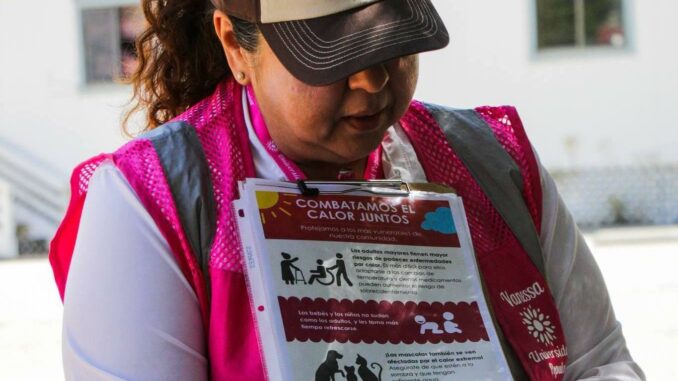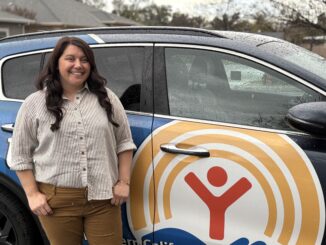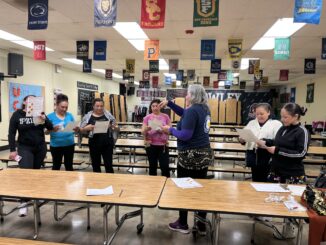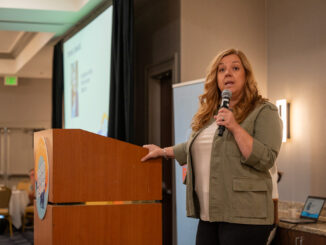
Comité Cívico del Valle and Universidad Popular tackle rising heat risks head-on
by Dorothy Korber
“Heat cramps and heat exhaustion can develop in individuals with overexposure to this heat, and without intervention can lead to heat stroke.”
Esther Bejarano, Director of Community Health, Comite Civico del Valle
Extreme heat is not just uncomfortable for humans and other living things—it can be deadly. Comite Civico del Valle (CCV) is committed to protecting residents of California’s Imperial Valley, where temperatures reached at least 100 degrees for 142 days last year, according to the National Oceanic and Atmospheric Administration.
“Imperial Valley summers pose very dangerous hot conditions,” says Esther Bejarano, director of community health for CCV. “In 2024, afternoon temperatures ranged from 113 to 121 degrees, while overnight temperatures typically hover in the mid to high 70s. Heat cramps and heat exhaustion can develop in individuals with overexposure to this heat, and without intervention can lead to heat stroke.”
CCV was founded in 1987 to improve the lives of disadvantaged communities in Imperial County. A key part of that mission is teaching residents strategies for living safely in extreme heat. The organization collaborates in this educational outreach with Universidad Popular, its counterpart in neighboring San Diego County. A focus for both organizations is reaching out to the elderly, who are more susceptible to heat-related illness and may be living in isolation.
“On one occasion, we learned that an 83-year-old woman, living alone, was without air conditioning for over five days in the middle of 120-degree weather,” recalls Bejarano. “Unfortunately, she had no money to pay repairs for her air conditioning unit. Comite Civico del Valle responded by paying for the repair costs of her unit.”
“Senior citizens are particularly vulnerable to extreme heat conditions,” notes Arcela Nunez-Alvarez, co-director of Universidad Popular. “We find that there is a need for additional support in the form of monetary assistance for utility bill payment and for transportation services to cooling centers.”
A related goal is encouraging people to check on the welfare of their friends, neighbors and relatives when high temperatures reach perilous levels.
“We always emphasize the importance of staying in contact with loved ones to have a plan of action in case of emergencies. Especially during heat waves,” Nunez-Alvarez says. “Through community outreach and education, we also provide fact sheets in Spanish and English that highlight the symptoms of heat illness and maps to local cooling and water stations.”
A central mission for CCV is offering resources and education to Imperial Valley’s farmworker community—in particular, how to work safely outdoors in extreme heat. One component of that is teaching them their occupational right to shade and water breaks. Another is how to identify symptoms of a heat illness emergency and seek emergency medical attention.
Identifying those symptoms can be lifesaving, as CCV staffers know from their own experience. Health director Bejarano told this story:
“Last summer, a community member came to a cooling station in Brawley and took a seat for approximately 40 minutes. CCV staff became worried when the individual could no longer respond to basic questions, so they immediately dialed 911. When the paramedics arrived, they diagnosed the individual with heat exhaustion and provided the necessary care to alleviate the symptoms.”
For more information on Comite Civico del Valle, go to ccvhealth.org. To learn more about Universidad Popular, visit www.unipopular.org.
Beat the Heat
- Stay inside air conditioned locations like at home, a library, mall, community center or call 2-1-1 to find a cooling station
- Restrict outdoor activities to the coolest part of the day or evening
- Drink water even if you don’t feel thirsty but avoid beverages with sugar, sodium, caffeine and alcohol
- Wear lightweight, light-colored clothing
- Check on family members and neighbors, especially those who live alone
For more information on how to stay safe in extreme heat and other emergencies, visit www.listoscalifornia.org.




